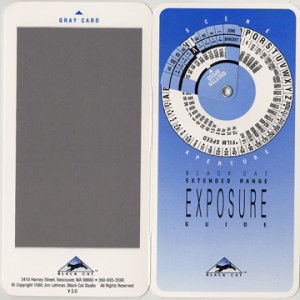
Next Full Moon – March 29, 2010
I recently had a customer ask me the best way to photograph the moon. It seems that they never could see any detail in the moon (overexposed) and the overall image was dark. First, the moon is much brighter and takes up a small portion of the image – the camera meter gets fooled since it sees all the darkness and sets an exposure that washes out the moon. Second the variation between light and dark values is beyond what your camera is capable of capturing in a single shot. We’ll talk about a fix to this problem later on . . . a little trick that involves using an imaging program like Photoshop Elements.
To capture the full “Man in the Moon” effect is easy to do by setting your camera manually to expose for the moon. We set the camera manually because your camera’s metering system usually gets fooled. Setting your camera manually eliminates this exposure error – the moon is always lit with the same intensity with the exception of solar eclipses.
For the complete “Man in the Moon” look, we suggest the following exposure – ISO 100 -1/125th second @ f/11When the moon is not full it is also very easy to get your exposure. Since a half moon is half as bright you just need to open your lens up by one more stop which lets twice a much light in – ISO 100 – 1/125th second @f/8. Using the same convention a 1/4 moon would require 4x as much light as the full moon or 2 stops more light and a setting of 1/125th second @ f/5.6. A tripod is always a great option for the sharpest shots especially when using a telephoto lens.

A Black Cat exposure guide (pictured above) is a great tool that lists manual exposure settings for more than 100 scenes. Just choose your scene – line up the scene code to your ISO and just set your camera to one of the displayed f-stop and shutter speed combinations. The Black Cat Exposure Guide is a must for anyone into time exposure and existing light photography. We stock the Black Cat Exposure Guide in Westwood & Englewood.
Getting both the moon and your scence exposed correctly in the same image is easily accomplished by compositing a properly exposed image of the moon with a properly exposed night scene in a program like Photoshop Elements.
Questions – Stop by, email or give us a call. Comments? Let us know if you liked this post. What other things you would like tutorials about?
Pingback: Photography Tips and Walkthroughs at Bergen County Camera Blog